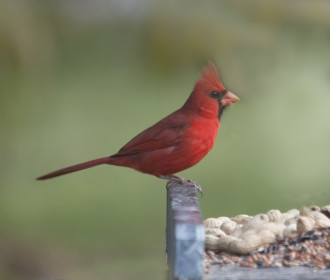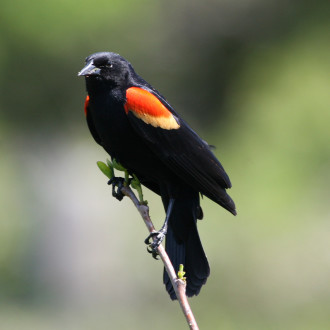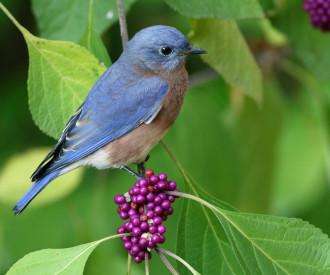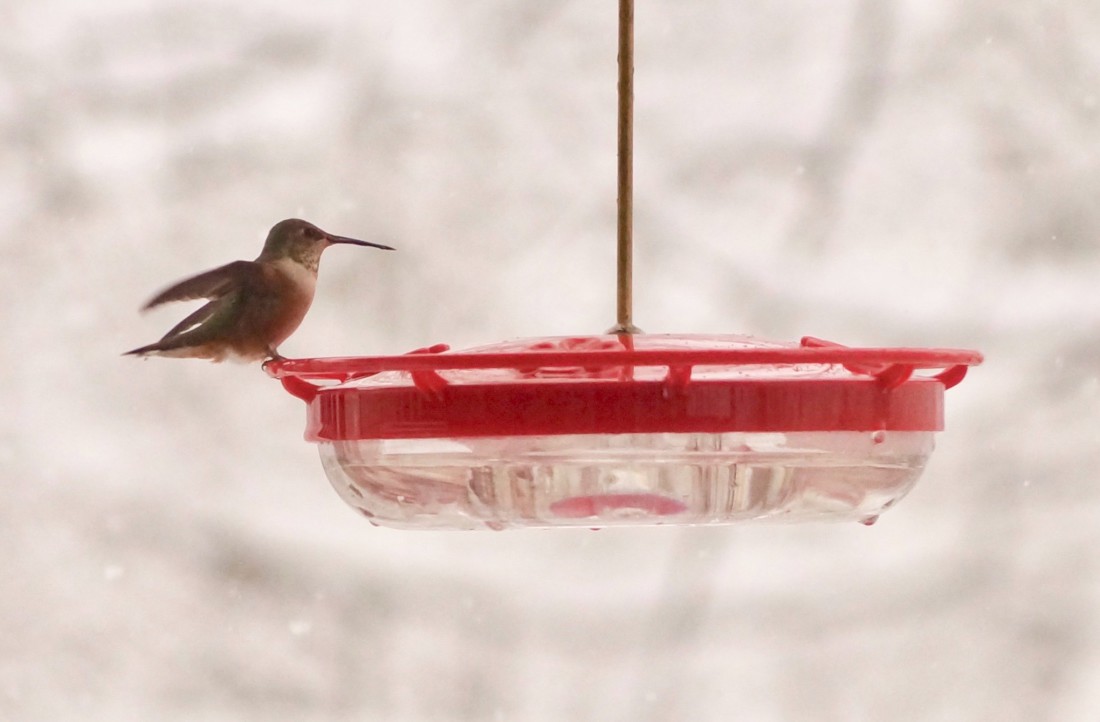Like many others during the holidays, the members of Asheville’s Elisha Mitchell Audubon Society have eager eyes for the gifts under their trees. They’re also looking inside the branches, above the foliage and in the surrounding brush — anywhere the treasure of a hidden bird might be found.

Every Christmas season since 1900, birders across North and South America have braved wintry conditions to participate in the National Audubon Society’s Christmas Bird Count. Originating as a conservation-minded alternative to traditional holiday bird hunts, the count has evolved into the world’s longest-running community science project. On Monday, Jan. 1, Asheville’s ornithological enthusiasts will contribute their own observations to the Christmas Bird Count’s 118th year.
The effort has taken on added importance in the light of climate change and its impact on bird populations, explains Tom Tribble, president of the Elisha Mitchell Audubon Society and compiler of the chapter’s Christmas Bird Count results. “Audubon uses our data to identify specific birds and make sure there are areas conserved so they can breed,” he says. “It really drives what Audubon is doing to protect birds and the places they need.”
Bird’s-eye view
Asheville’s count is just one of the 56 scheduled in North Carolina; more than 2,500 are planned across Audubon’s entire reach. At each count, volunteer birders band together to cover a circle 15 miles in diameter, adding up every individual bird they detect with their eyes and ears. Considered as a whole, the circles yield an impressive survey of avian abundance. Last year, a total of 73,153 counters recorded over 56 million birds from 2,636 distinct species.

Scientists have used Christmas Bird Count data to inform more than 200 peer-reviewed publications, the most comprehensive of which is Audubon’s 2014 Birds and Climate Change Report. Examining 588 North American birds, the study found that 314 species could lose more than 50 percent of their current climate-suitable range by 2080 — with 126 “climate-endangered” species facing the same habitat loss by 2050.
“Every bird has a set of environmental conditions that enable it to thrive, and climate governs it all,” says Tribble. “If the climate changes from what they need, then they’re not as successful breeding, and it doesn’t take much for a species to go into decline.” Familiar birds such as the bald eagle, mallard duck and Eastern whip-poor-will are all classified as climate endangered under the Audubon report.
Given climate change’s widespread threat to bird populations, Audubon has set its sights on broader solutions to complement its habitat conservation efforts. Kim Brand, field organizer at the Boone Mountain office of Audubon North Carolina, notes that promoting a clean energy transition is one of the organization’s main policy goals. “We want to connect the dots and build up supporters of both birds and clean energy for our state,” says Brand. “That will help us all, not just the birds.”
Rare birds
For the participants in Asheville’s Christmas Bird Count, climate change may already be showing its effects through the presence of unexpected visitors to the area. “It happens more and more frequently for birds to show up that shouldn’t be here,” Tribble says. He points to the presence last year of two greater white-fronted geese, which normally spend the winter much farther south in Central America.
Tribble notes that an increase of birders could also underlie the greater frequency of rare species sightings, as he suspects is the case for the rufous hummingbird, native to the West Coast. The tiny bird’s usual winter destination is Mexico, but individuals have been spotted in Asheville and Flat Rock in recent years.
“They’ve probably shown up in the Southeast in the winter for centuries,” Tribble says. “But as knowledge of these winter migrants has become more widespread, more people are leaving feeders up in the winter and seeing more Western hummingbirds.”
Other birds are noticeable for their absence in the winter months. Many duck species, Tribble explains, visit in lower numbers when unseasonably warm weather leaves their lake and pond habitats unfrozen. Audubon predicts that continued warming and changes to precipitation patterns will reduce duck habitat over time.
Joining the flock
Tribble encourages anyone interested in conservation to contact Audubon and get involved with the Christmas Bird Count. While the day can be long — most volunteers start at daylight and count until the late afternoon — a seasoned birder heads each team, helping newcomers classify the species that they spot. Audubon also offers a free bird guide app, complete with example songs to assist with identification by sound.

an eastern bluebird on American beautyberry by Will Stuart courtesy of the Audubon Society
“New folks can be really helpful just by keeping their heads up,” adds Brand. “Experienced birders tend to focus in narrowly on sparrows or warblers, looking in the bushes, but someone scanning the sky can notice the broad-winged hawk that happens to fly over for one second.”
Those who take part in the count often find that it becomes another beloved holiday tradition. Volunteers create routines around their patrol routes and swap stories with other birders about memorable sightings from counts past. “It’s the closest thing we have to a birding ritual. Every year when I do it, I think of my friends in Belize or my dad in Arizona counting birds at his feeder as part of the Christmas Bird Count there,” Brand says.
And, just like for any holiday tradition, Brand notes that birders can find inspiration in unlikely places. “One team I know stops for lunch at McDonald’s every year so they can get house sparrows for their lists, attacking the dumpsters.”
WHAT: 118th Annual Audubon Christmas Bird Count
WHERE: Across Buncombe County
WHEN: Monday, Jan. 1. Email Tom Tribble at tntribble@gmail.com for more information and to volunteer.
DETAILS: emasnc.org



Before you comment
The comments section is here to provide a platform for civil dialogue on the issues we face together as a local community. Xpress is committed to offering this platform for all voices, but when the tone of the discussion gets nasty or strays off topic, we believe many people choose not to participate. Xpress editors are determined to moderate comments to ensure a constructive interchange is maintained. All comments judged not to be in keeping with the spirit of civil discourse will be removed and repeat violators will be banned. See here for our terms of service. Thank you for being part of this effort to promote respectful discussion.